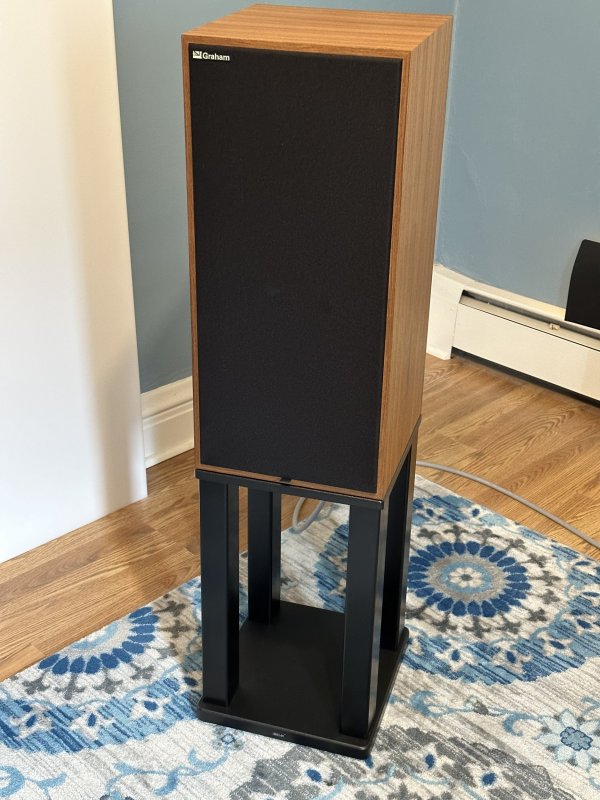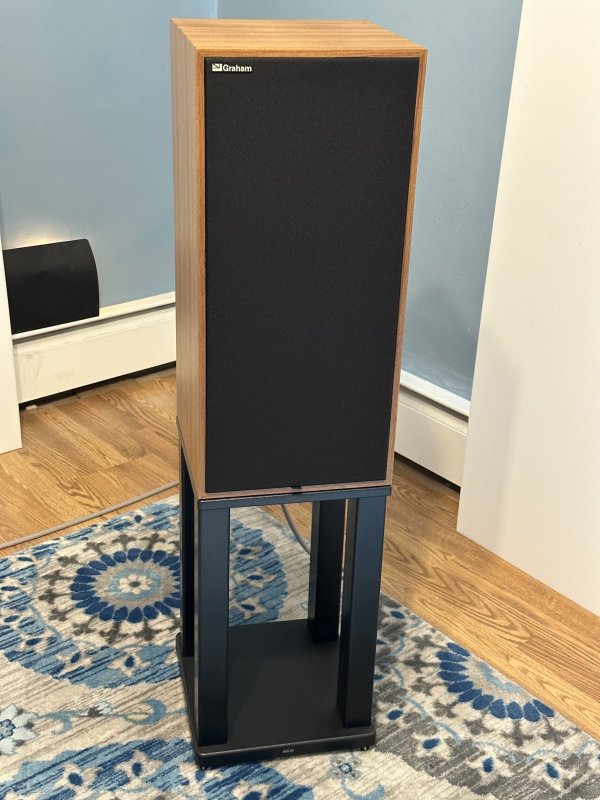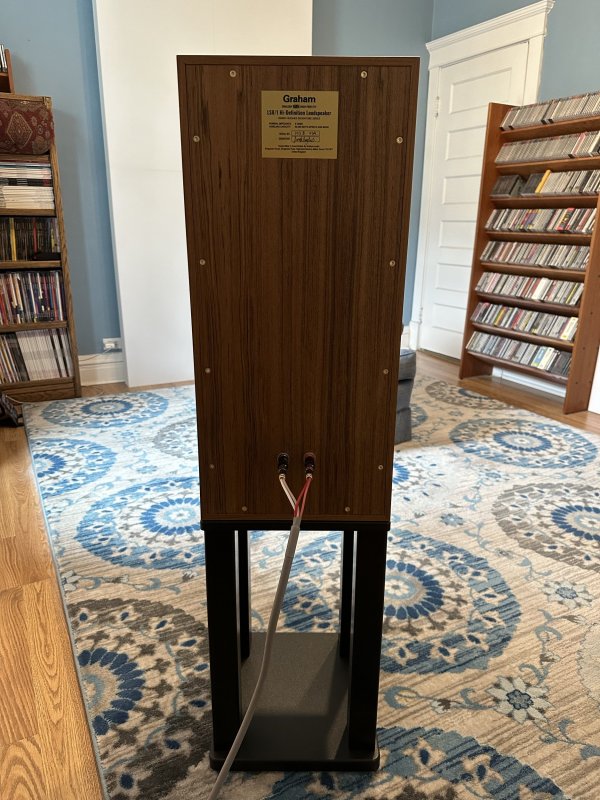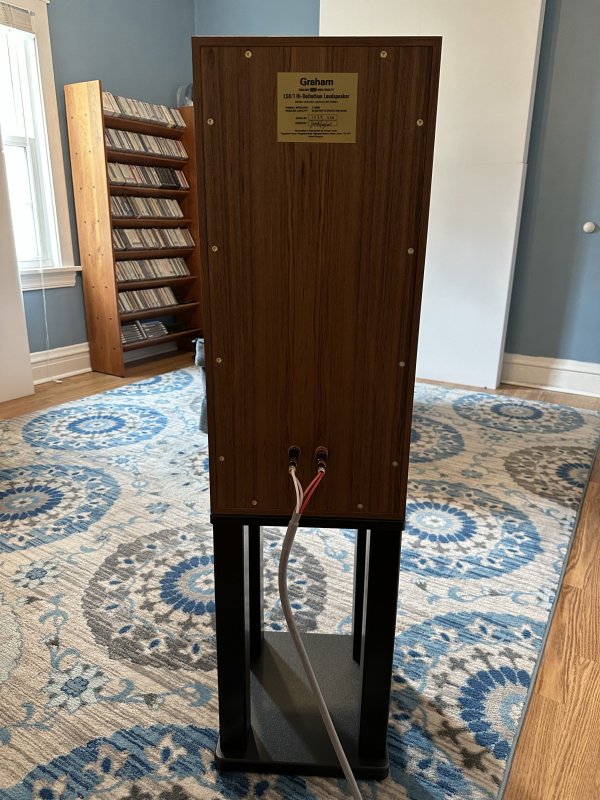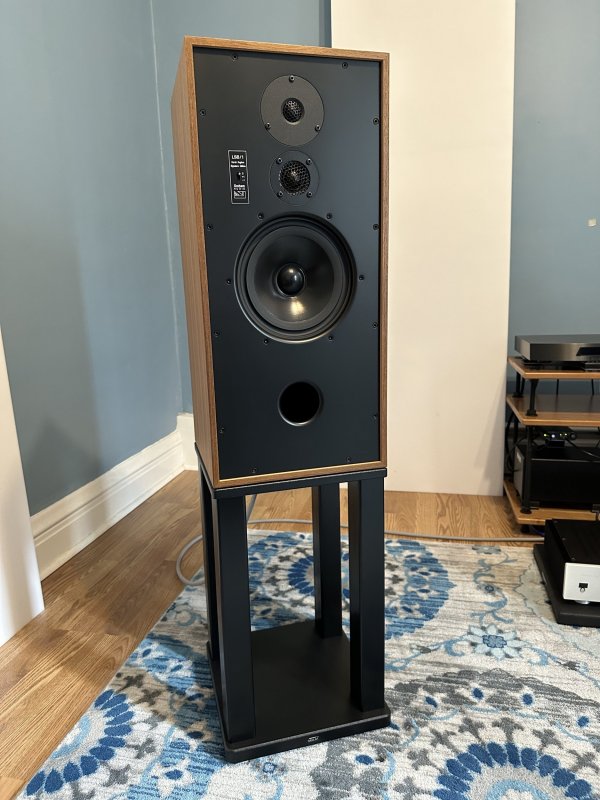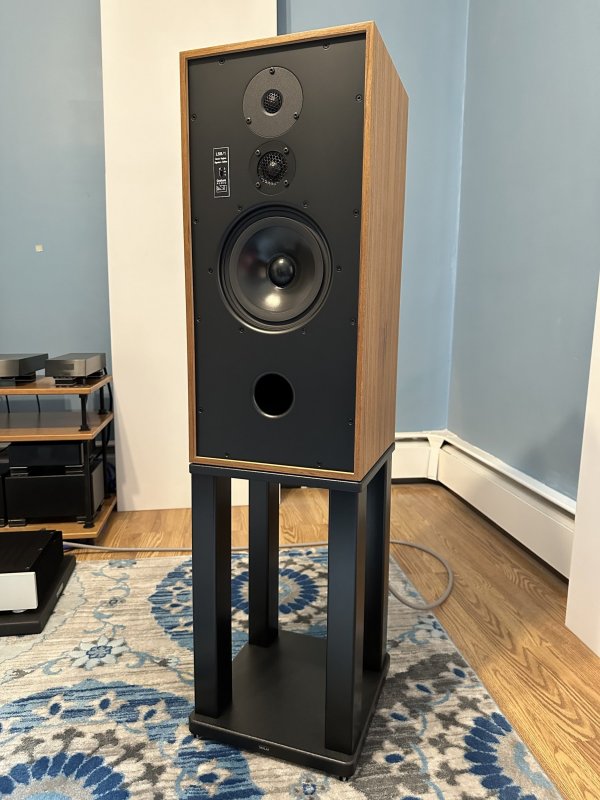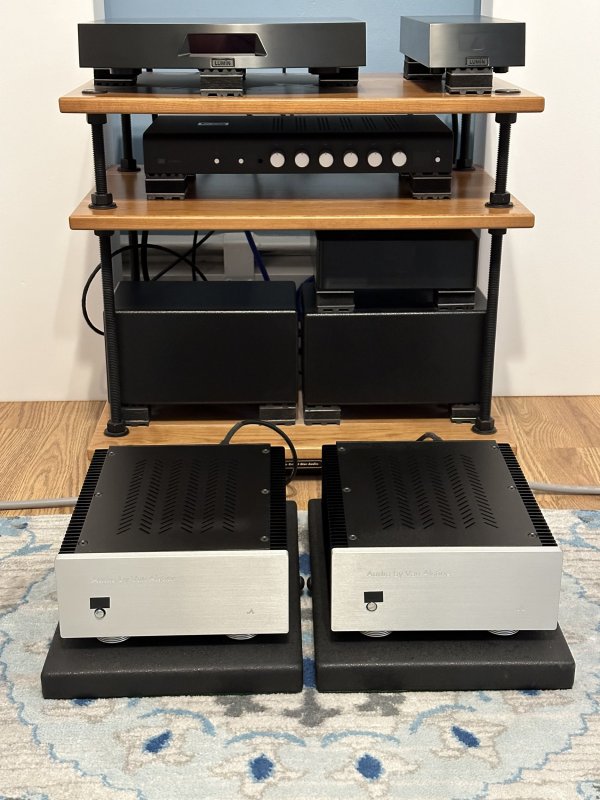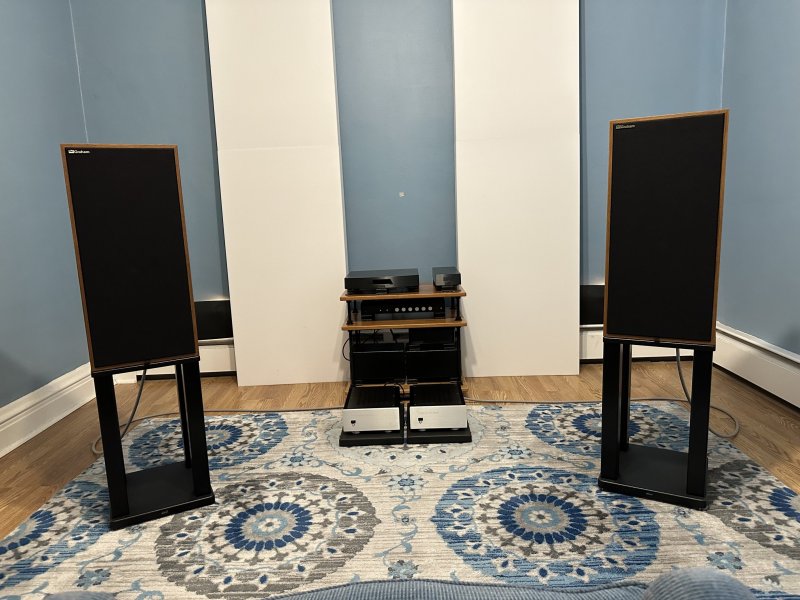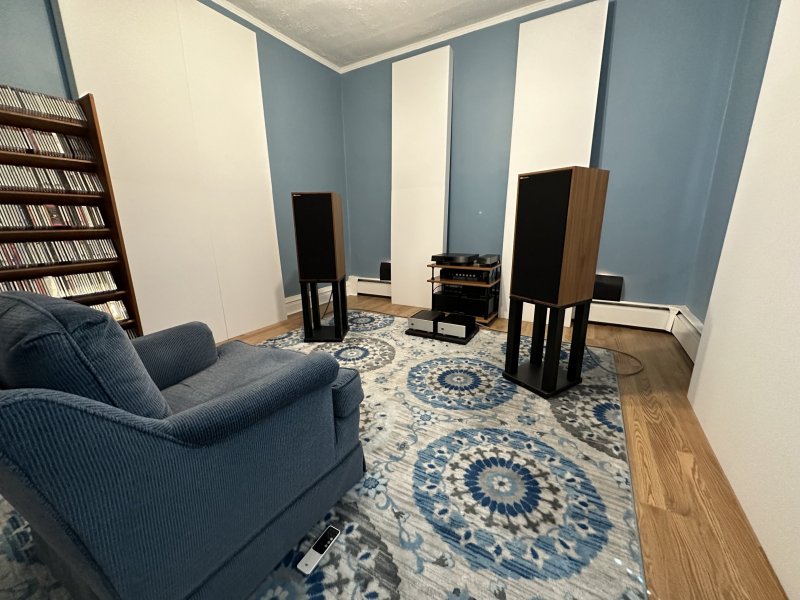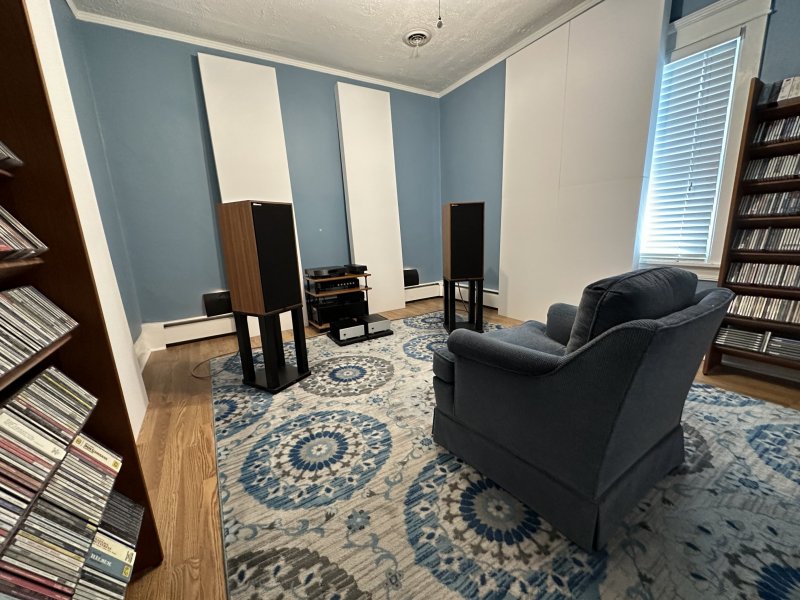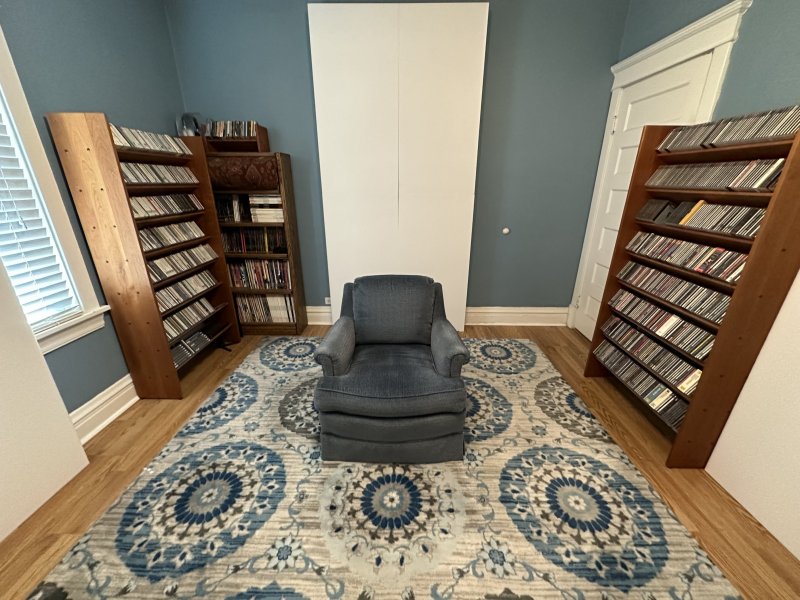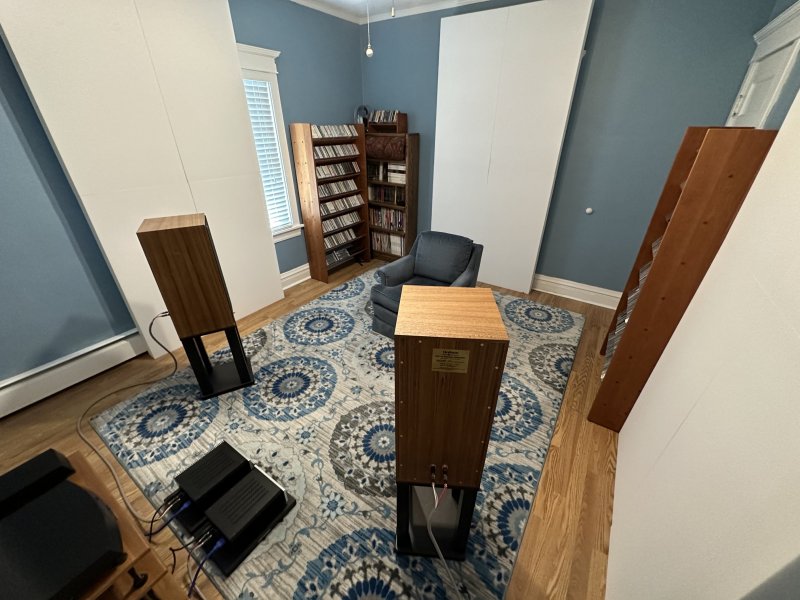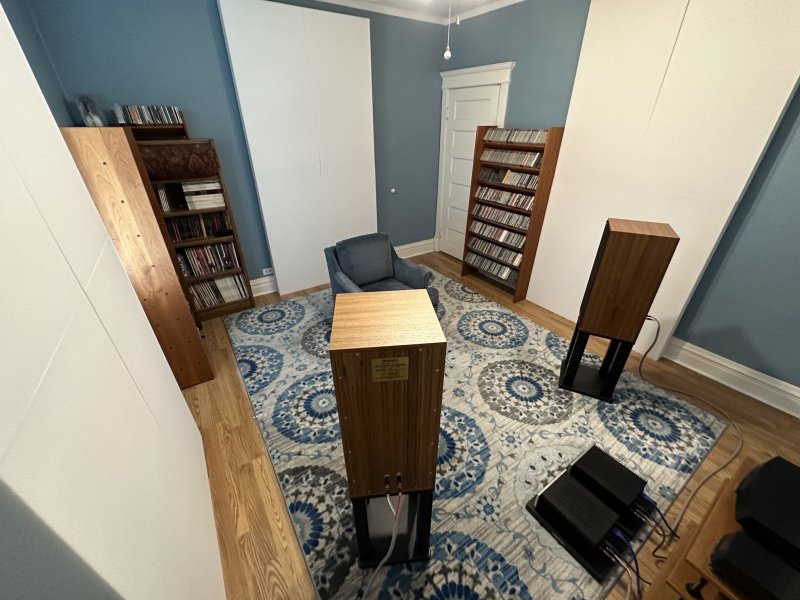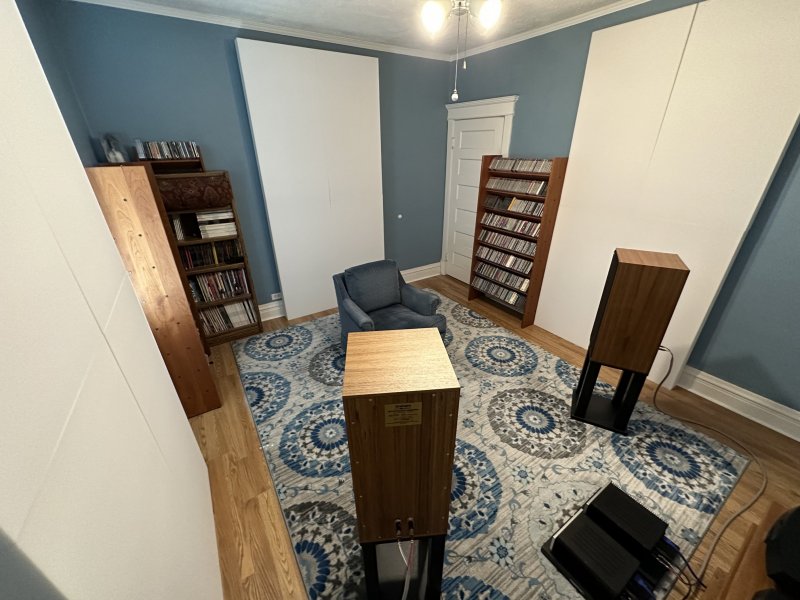Other Thoughts & Observations
The Graham LS8/1 is rated to have a sensitivity of 87 dB/watt/meter with a nominal impedance of 8 ohms. According to
one published test report of the non-Signature version of the speaker (which apparently cost 6,200 Euros, without stands), their impedance never drops below 8 ohms. They seem to be an easy load for an amplifier. Certainly my Audio by Van Alstine amps handle the load without any apparent strain up to volumes as high as I care to listen.
I want to emphasize how
very interesting and engaging these are to listen to. I find myself fascinated both with new music and the sound of that new music, as well as the music and sound of old favorites. They often sound just so very REAL! The ability to hear voices and instruments sound so much like they do in life, and the ability to hear so very deep into the mix of complex music is a joy. The overall ensemble of voices and instruments is so well presented, as is the ability to hear and follow all the individual players and singers. This balance of ensemble and individuals is more like what I hear at live unamplified concerts than I’ve ever heard from any other speakers.
Another major factor in this
very interesting and engaging impression is certainly the spatial presentation. That space varies so much from one recording to another. Many recordings can be so very immersive that the two-channel playback sounds like a full surround system but without the annoying artifacts which almost always are present in such surround systems. Instrumental placement does not wander and the listener is not placed in the center among the players. Absent Q-Sound or other phase manipulation, the players remain in front. On good classical recordings, only the hall ambiance projects up and outward from the front of the hall, illuminating the recording venue’s surfaces and immersively placing the listener within that ambient environment. But when phase is intentionally manipulated in the recording (such as in much electronic music) so that instruments appear to the sides, above, or even to the rear of the listener, that manipulation is so coherent and embedded in the overall spatial presentation that it just seems “right” and never annoying or gimmicky. In this respect the spatial presentation is far more believable than what I’ve heard from BACCH processing of two-channel material at AXPONA demos. BACCH processing just makes me laugh; it’s like an amusingly ridiculous exaggerated funhouse of sound.
With the acquisition of the Grahams, I’ve become much less enthusiastic about listening to music via headphones. The Grahams match or better the tonal accuracy of any of my headphones above the bass. Yes, headphones can provide deeper and yet smoother, fuller bass than speakers because headphones avoid room modes and Allison effect interactions. But the relatively unnatural spatial presentation of headphones is quite uninteresting and not nearly as engaging as the Grahams spatial presentation. More than ever, I’d just rather listen to my speakers for music. My headphones are more and more relegated to providing the soundtrack for streaming video at times when I don’t want to bother my spouse with such audio or because, compared to the speakers built into my Mac computer and Sony TVs, headphones do provide superior audio.
As I mentioned earlier, for the first time in my decades of home music listening experience, I “get” what REG is talking about in his preference for closed-eyes listening. With other speakers/systems, I have much preferred to listen with eyes open in a semi-darkened room so that my eyes could focus on the “visible” images of instruments on the soundstage. But with the Grahams, I hear the images and stage even clearer in three-dimensional space when I listen with my eyes closed! Why this should be, I do not know. I’m tempted to say that it’s because the actual overall sonic presentation is in fact clearer and more life-like than ever before, but that is just speculation. Why have other listeners found closed-eyes listening so satisfying with other speakers, seemingly for decades, when I did not?
Moreso than any other speakers I have owned, the Grahams allow and indeed beckon me to adjust the volume to that “just right” level where the tonal balance and other sonic aspects magically gel. There is no ambiguity about this. I know instantly when the presentation sounds maximally real.
The Grahams are agnostic in terms of the music played. In other words, they sound just as fine with electronic music studio creations as they do with the finest concert hall Blumlein-miked recordings. They seem to serve all recorded music equally well. I do not find myself gravitating toward one musical type because of the speakers. To the contrary, they seem to actively encourage my exploration of a wide variety of musical genres because everything sounds so interesting and engaging. Despite their origins in BBC research, you don’t need to limit yourself to classical music or avoid other types of music. Sure, they reveal the quality of the recording as well as or better than any other speakers I’ve owned, but as I’ve mentioned above, they merely report deficiencies, they don’t hurl them at you in an offensive or obnoxious way. Thus, a very broad range of commercial recordings are quite enjoyable despite any deficiencies they may have in bass extension, tonal balance, dynamic compression, or spatial aspects.
These speakers in my new set-up most definitely best the Sanders 10e in terms of transparency to the source. Who would guess that a top electrostatic effort could be so put to shame in this aspect? There is just so much more natural detail audible, yet always without any unnatural treble emphasis. Differences among recordings are yet so much more obvious in terms of tonal balance, spatial presentation, distortion levels, etc. The window through which the recordings are heard is just so much cleaner.
Unfortunately, when I acquired the Grahams I also acquired other new equipment and changed my set-up somewhat. Thus, I’m really not certain how much of the added transparency and the rest of my enthusiasm for what I’m hearing is due strictly to the LS8/1 speakers as opposed to other system and set-up changes I made at the same time:
1. My Audio by Van Alstine amps are also new and I have never heard them in any other context or with any other speakers. These replaced the Sanders Magtech amps I was using with the Sanders 10e.
2. For the first time I am using my Lumin X1 streamer/DAC straight into my power amps. In the past, I have always fed the X1’s output through some sort of digital equalizer. Now, unless I engage the Loki Max's processing, I’m using the X1’s DAC and Leedh-processed volume control via its balanced analog output to directly control and feed signal to my power amps. Even with the Loki Max processing, the signal path is all-analog from the Lumin's output through speaker output. The dbx VENU360 I was using with the Sanders speakers to perform crossovering, EQ, and time alignment all in the digital domain, together with the 24/96 A/D and D/A processing inherent in that necessary-to-the-Sanders-10e Loudspeaker Management System is gone.
3. This is the first time I’ve used the four-inch-thick flat AlphaSorb acoustic foam panels in this arrangement and on the walls behind the listening seat.
Still, given the importance of speakers to what one hears from a home audio system, I’m confident that the Graham Audio LS8/1s are the largest factor in what I’m now experiencing.
From what I’m hearing, my impression is that the Graham sounds much better in this same room than the Stirling Broadcast LS3/6 did seven years ago or the Spendor SP1/2 did in my prior home ten years ago. In this respect I seem to disagree with REG’s review of the Graham. But since I don’t have either of those earlier speakers available for direct comparison while REG does, and since I’m using much different associated equipment and set up than when I was using those earlier speakers, I will defer to REG’s judgement that the three are more similar than I currently think they are. I think we would agree, however, that the Graham has quite significantly better bass extension and capacity for playing bass loudly than the Spendor SP1/2 and is also somewhat better in those aspects than the Stirling Broadcast.
Magic Boxes
Yes, these speakers surprised me with their magic. Except for the bottom bass, sonically these Graham LS8/1s are the best I’ve ever owned. They are worthy anchors of a truly exceptional, simple, and relatively compact two-channel audio system. The design choices may seem anachronistic and even unattractive to some—the shape, size, need for stands, highly resonant cabinet, high crossover for such a large bass speaker, and the three-way design when two-way would seem more logical with modern drivers. But the sonic truth and listening satisfaction these produce is magical indeed.


